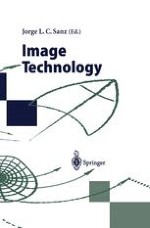1996 | OriginalPaper | Buchkapitel
Video Compression for Multimedia Applications
verfasst von : A. A. Rodriguez, C. E. Fogg, E. J. Delp
Erschienen in: Image Technology
Verlag: Springer Berlin Heidelberg
Enthalten in: Professional Book Archive
Aktivieren Sie unsere intelligente Suche, um passende Fachinhalte oder Patente zu finden.
Wählen Sie Textabschnitte aus um mit Künstlicher Intelligenz passenden Patente zu finden. powered by
Markieren Sie Textabschnitte, um KI-gestützt weitere passende Inhalte zu finden. powered by
Rapid continual advances in computer and network technologies coupled with the availability of high-volume data storage devices have effected the advent of multimedia applications in desktop computers, workstations, and consumer devices. Digital video data poses many challenges due to its inherent high bandwidth and storage requirements. For example, uncompressed 640 by 480 digital video (i.e., the screen size of typical desktop computers) at 30 frames-per-second (fps) in RGB24 color format requires a bandwidth approximately equal to 26.37 Megabytes/second (MB/sec), while HDTV requires a data rate larger than 1.5 Gigabits/ second (uncompressed). These video data rates are prohibitive for transmission over networks like the Integrated Services Digital Network (ISDN) that will support bandwidths from approximately 64 Kilobits/sec (Kb/sec) to 1.920 Megabits/ sec (Mb/sec) [1, 2]. They are also forbidden in desktop computers, some which have an effective bandwidth as low as 500 Kilobytes/second. Even high capacity storage devices, like CD-ROMs that can hold up to 650 MB of data, could only store a few seconds of uncompressed digital video. It is then apparent that in order to transmit, store, or display real-time digital video, some form of compression is necessary.
